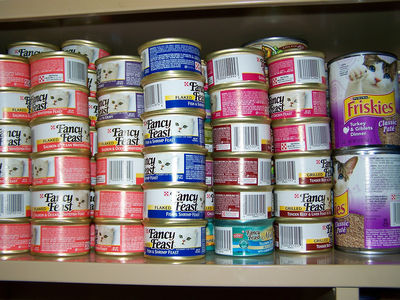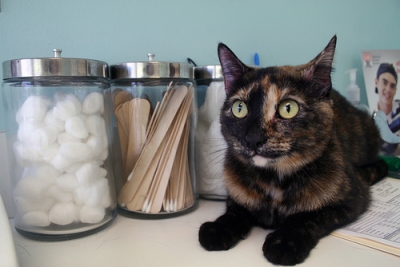
You would probably rather read a good book, but since our pets can’t read, it’s crucial for you to learn all about food labels and what they mean.
AAFCO (Association of American Feed Control Officials) is the regulatory group for the pet food industry. It is not a government body and members can be involved in the pet industry itself. This means that they could put their own interests above anything else. AAFCO does not provide their publication online which lists definitions and other information about pet food ingredients. Non-members must pay $50 to receive a copy.
Pet food ingredients are listed in order of weight in dog and cat foods. But it doesn’t stop there. The types of ingredients are important to know.
The first ingredient should be a form of protein, meat or fish. The meat or fish should be named, ie beef, chicken, lamb, salmon, etc.
If the meat has the word “formula” in it’s name, be aware that the meat must be at least 25% of the total weight.
Descriptive words such as flavor, flavored with, dinner, can be misleading and do not fully describe contents which usually include filler such as grains.
Beware of the words “by-product” as they could include ingredients such as waste products not to be consumed by humans which you don’t want to feed your furpal.
Lamb meal, beef meal, chicken meal, turkey meal or fish meal is the ground tissue of these animals. Meal is a protein that has been cooked and has the water and fat removed, then ground. Meal can also contain by-products.
Fats are necessary to provide energy and keep skin and coat healthy. Not all fats are created equal so it’s a good idea to look for the source. Fish oils, canola oil and olive oil are good sources.
Insoluble and soluble grains if included at all in the pet food should represent the smallest percentage, no more than 7% in a dog’s diet and less is better. Oats and barley are examples of soluble fiber. Wheat, corn, soy and rice are insoluble fiber. Wheat, corn and soy have been linked to allergic reactions in pets and are ot necessary in their diets. Many pet foods today offer grain-free menus.
Cats are obligate carnivores, that is they are meat eaters. They don’t need grains and only a small amount of other carbohydrates. Look for taurine, an essential amino acid, added to their food.
Vitamins, minerals and supplements are added to your pets’ food. The amount of these nutrients necessary depends on your pet’s body size and lifestyle. Before adding any of these to your pet’s diet, check with your veterinarian. Doing it yourself can cause imbalances that can harm your pet’s health.
Preservatives such as BHA or BHT should be a red flag to you. Artifical preservatives are used for the manufacturer’s benefit. Your pet couldn’t care less about the color of the food and are added to please your eye. Both added color and artificial preservatives have been linked to harmful side effects. Artificial colors and chemical preservatives have no nutritional value.
Don’t rely heavily on the guaranteed analysis list. The word “Crude” doesn’t describe the digestibility of ingredients.
Your pet will let you know if the food you offer is tasty, but it’s up to you to keep a watch on his/her overall health and that the food consumed provides the proper nutrients.
If you are unsure of any ingredient in your pet’s food, contact the manufacturer for clarification. If the company representative doesn’t answer your questions satisfactorily and honestly, don’t purchase their food.
If your pet is other than a cat or dog, check their food labels as well. Do your research and find out what is necessary to keep them healthy.
Related articles:


